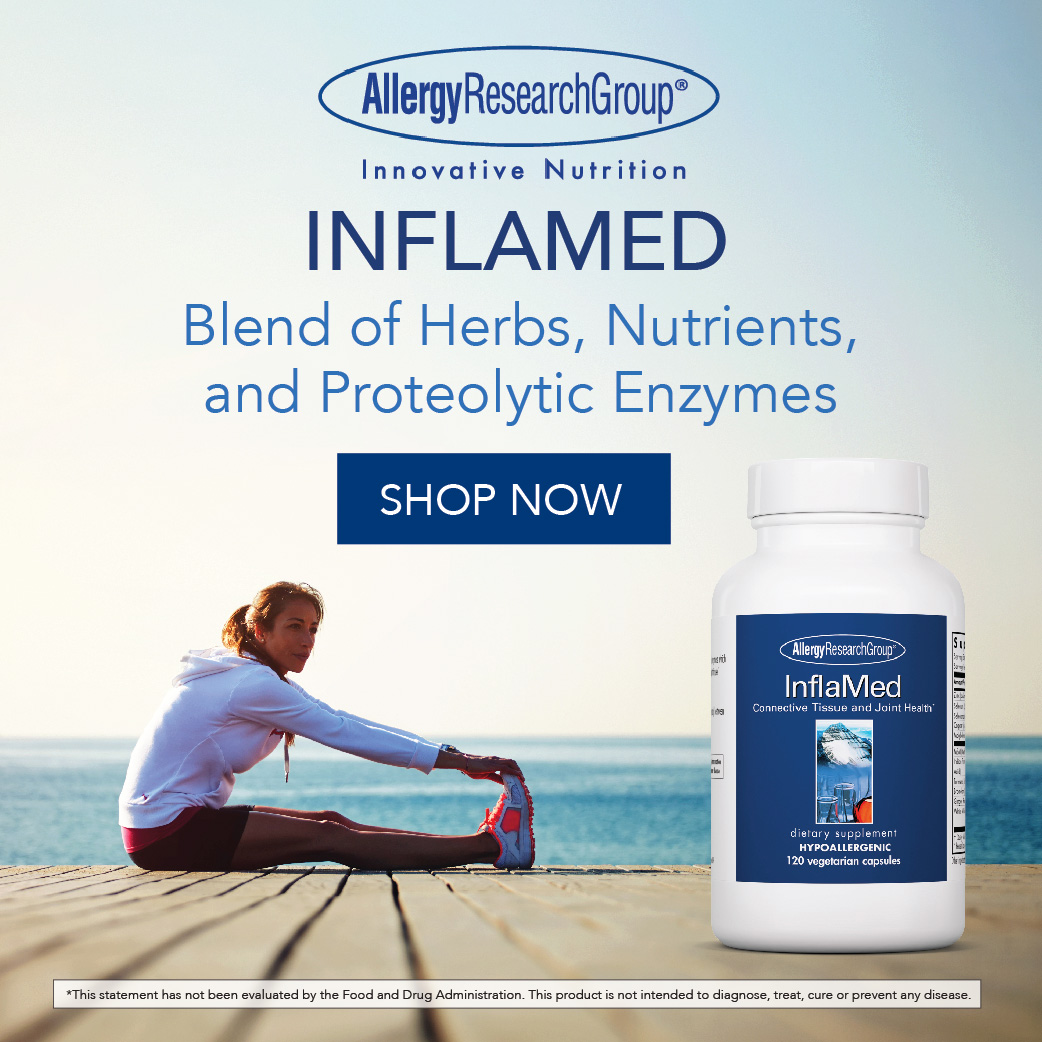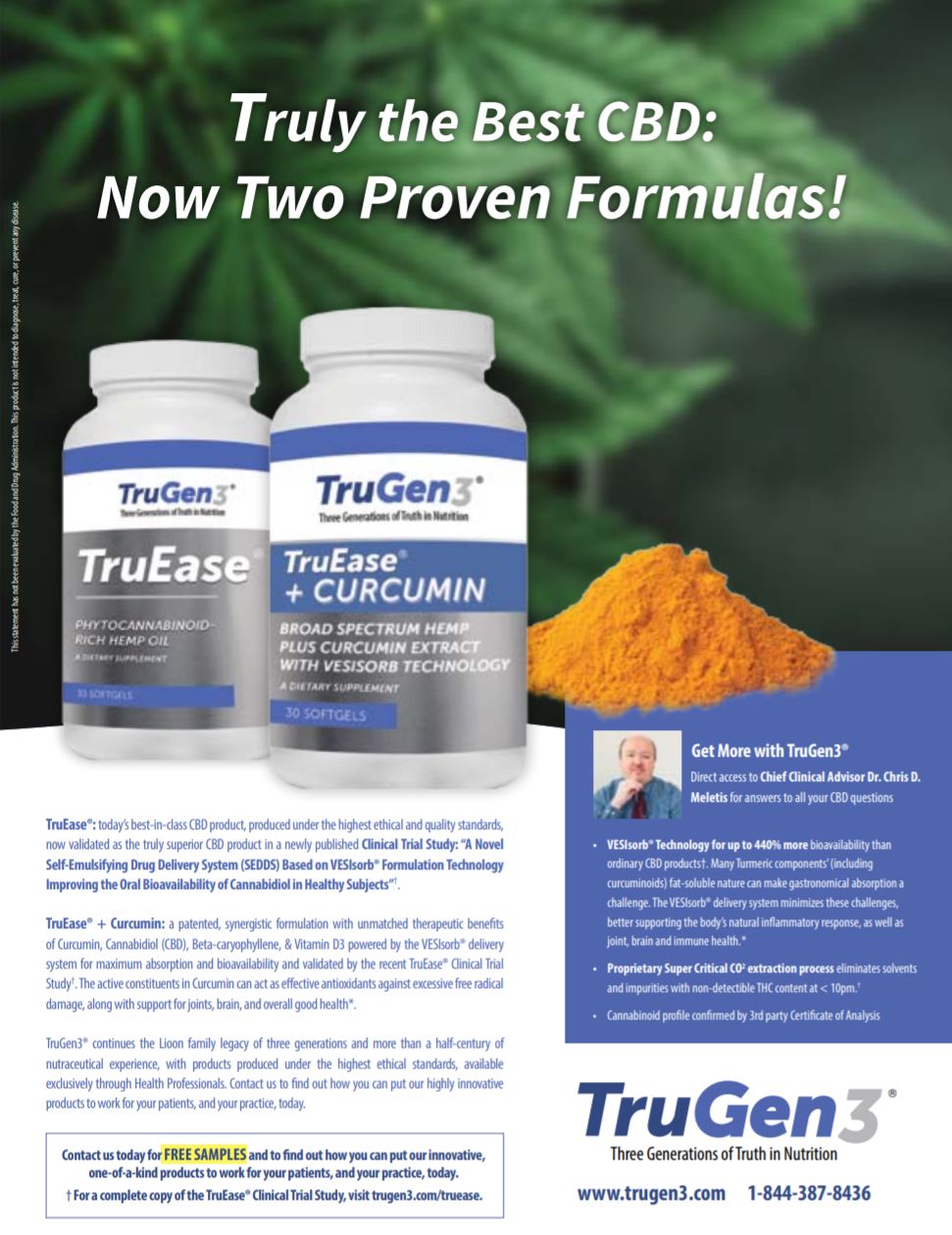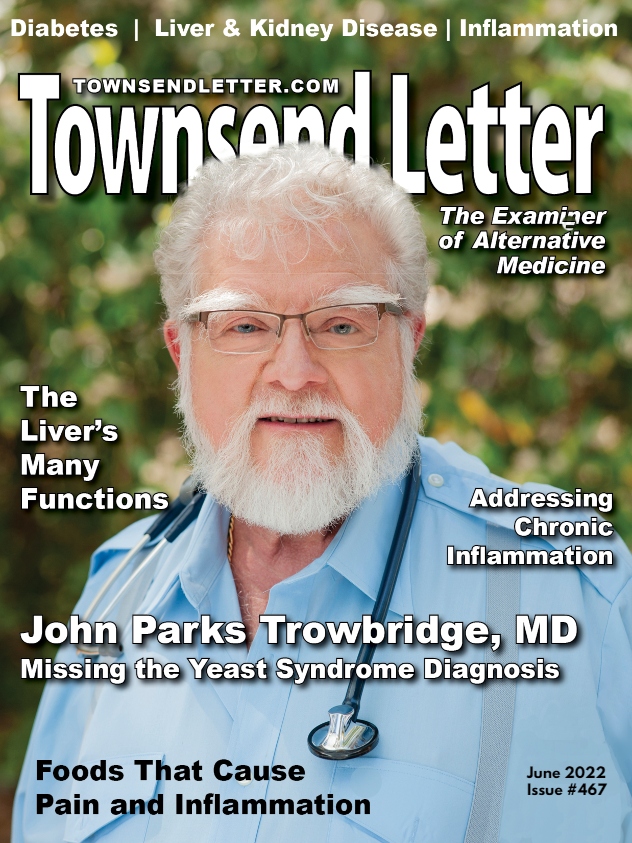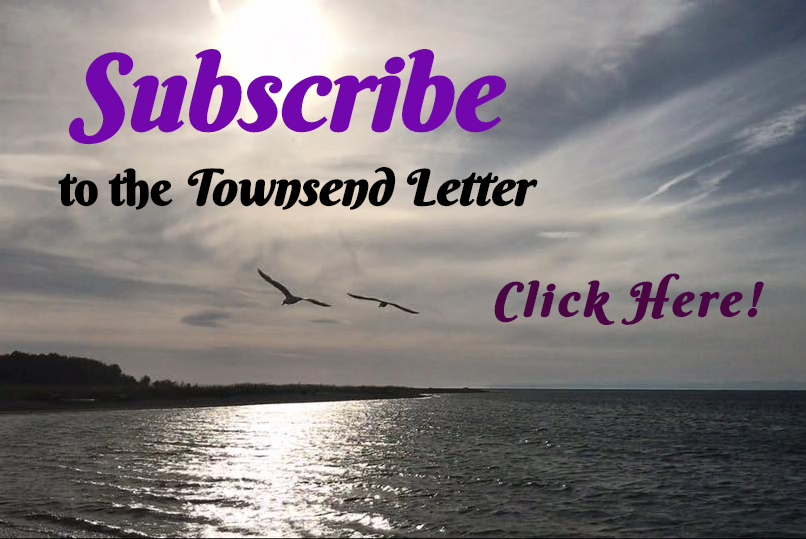https://medcraveonline.com/JNSK/JNSK-13-00565.pdf
Design and development of novel compounds aimed
at optimizing the function of microtubules and
tubulin in the immune system and the brain
Volume 13 Issue 6 – 2023
Marco Ruggiero
National Coalition of Independent Scholars, United States of
America
Correspondence: Marco Ruggiero, MD, PhD, National
Coalition of Independent Scholars. 125 Putney Rd Battleboro,
VT 05301, United States of America,
Email
Received: October 11, 2023 | Published: November 27, 2023
Abstract
This study describes the design and development of novel compounds aimed at optimizing
the function of microtubules and tubulin in the immune system and the brain as they relate
to the Orch OR theory of consciousness.
These compounds are defined by the following molecular formulas:
C65H100CoN15O22P(C6H12O5);
C65H100CoN15O22P(C5H10NO4);
(C65H100CoN15O22P)(C6H12N2O)n;
(C65H100CoN15O22P)(C6H12O5)(C6H12N2O)n;
(C6H12N2O)n(C6H12O5)m;
Zn(C6H12O5)2;
These molecules, formulated under the form of drugs, health functional foods, or food
supplements, have the potential to positively affect a number of areas ranging from
prevention and therapy of neurological diseases to supporting the immune system.
Keywords: tubulin, microtubules, immune system, brain, consciousness, orch or
Journal of Neurology & Stroke
Review Article Open Access
Design and development of novel compounds aimed at optimizing the function of microtubules and
tubulin in the immune system and the brain
159
Copyright:
©2023 Ruggiero
Citation: Ruggiero M. Design and development of novel compounds aimed at optimizing the function of microtubules and tubulin in the immune system and
the brain. J Neurol Stroke. 2023;13(6):158‒164. DOI: 10.15406/mojor.2023.13.00565
be properly described by crystallographic methods developed for
actual aperiodic crystals. In the context of biology, the term aperiodic
crystal is used to describe genetic material, such as DNA or RNA. In
other words, aperiodic crystals are solid materials with a specific but
non-periodic arrangement of atoms. The self-assembling aperiodic
crystals described here are based on the prescient intuition of Erwin
Schroedinger. In 1944, the Austrian physicist published a book called
“What is Life?” In this book, Schrödinger proposed a number of
hypotheses about the nature of life, including the hypothesis that the
genetic material containing the information for life is an aperiodic
crystal.11 Schrödinger’s hypothesis was based on the idea that genetic
information must be encoded in a physical structure that is stable and
can be copied accurately. He argued that a periodic crystal would
not be suitable for this purpose, because it would be too rigid and
would not be able to accommodate all of the possible variations in
genetic information. In contrast, an aperiodic crystal would be able
to encode a wide variety of information in a stable and reproducible
way. The key point here is that Schrödinger also argued that aperiodic
crystals would be able to self-assemble and this is the peculiarity of
the crystals described in this study.
The first type of crystals here described consists of poly-lysine
and glutamic acid; the second type consists of crystals of sulfated
polysaccharides containing fucose, galactose, xylose, arabinose and
rhamnose, and lysine, alanine, tyrosine and cyanocobalamin. In the
first type of crystals, poly-lysine constitutes the backbone for the
establishment of non-covalent bonds between the positively charged
amino groups of poly-lysine and the negatively charged acidic
moiety of glutamic acid. In the second type of crystals, the mixture
of lysine, alanine, tyrosine and cyanocobalamin is complexed,
through formation of non-covalent bonds, with the acidic backbone
constituted by the sulfated polysaccharides where the negatively
charged sulfate ester and carboxylic groups of the polysaccharides
interact with the positively charged moieties of the amino acids and
cyanocobalamin. The two types of aperiodic crystals interact in a
CO2-enriched hydrophilic medium with the resulting self-assembly
of complex structures composed of random-sized aperiodic crystals
of [poly-lysine/glutamic acid], and [sulfated polysaccharides /lysine/
alanine/tyrosine/cyanocobalamin]. The composition of the CO2-
enriched hydrophilic medium is the following:
Sodium (mg/L) 1.8
Magnesium (mg/L) 1.5
Calcium (mg/L) 8.4
Sulfates (mg/L) 7.8
Nitrates (mg/L) 6
pH 6.65
Resistivity (Ω) 18,000
Fixed residue as 180 °C (mg/L) 39
The aqueous medium contains dissolved CO2.
These crystals, because of their random-size and, therefore,
random distribution of electrical charges on their molecular surface,
contain an elevated degree of information according to Shannon’s
entropy equation. The Shannon entropy equation is a formula used to
quantify the uncertainty or randomness of a probability distribution.
It is named after Claude Shannon, the American mathematician and
electrical engineer who is considered to be the father of information
theory. The Shannon entropy equation is as follows:
H(X) ip(x_i)log 2(p(x_i))= − ∑
where:
H(X) is the entropy of the probability distribution X
p(x_i) is the probability of the event x_i occurring
An additional level of information can be found in the molecular
structure of tyrosine, an amino acid taking part in the formation of the
aperiodic crystals and also a key constituent of tubulin proteins. In the
context of microtubules, tyrosine residues are involved in a number of
important functions, including microtubule assembly and stability.12
For example, tyrosine residues are involved in the formation of
hydrogen bonds between alpha- and beta-tubulin subunits. These
hydrogen bonds are essential for the stability of microtubules. Tyrosine
residues are also involved in the interactions of microtubules with
other proteins, such as motor proteins and microtubule-associated
proteins. These interactions are essential for the many functions of
microtubules in the cell. The main point here, however, is that tyrosine
has pi resonance clouds that are deemed essential for consciousness.13
Pi resonance clouds are delocalized electron clouds that are found in
aromatic amino acids such as tryptophan, phenylalanine, and tyrosine.
In order to have pi resonance, a molecule must have a flat ring
structure with alternating single and double bonds. This is because the
delocalized electrons are able to move freely around the ring, which
allows them to form pi bonds. Orch OR proposes that the pi resonance
clouds in microtubules can form quantum superpositions. This means
that they can exist in multiple states at the same time. When the brain
is processing information, these quantum superpositions are thought
to collapse into specific states, giving rise to conscious experience.13
Role of cyanocobalamin in the self-assembling
information-containing aperiodic crystals
Cyanocobalamin is a key component of one of the crystals; also
known as vitamin B12, it is an essential nutrient that plays a vital role
in many bodily functions, including red blood cell formation, DNA
synthesis, and nerve function. In the context of this study, however,
the main reason for its integration in the crystal is that it plays a role
in consciousness. Cyanocobalamin deficiency can lead to a variety
of cognitive impairments, including impaired memory, attention,
and executive function, whereas cyanocobalamin supplementation
can improve cognitive function in people with cyanocobalamin
deficiency.14 One possible way that cyanocobalamin could influence
consciousness is by affecting microtubule dynamics and stability
since it is a cofactor for the enzyme methionine synthase, which is
involved in the genesis of microtubules.15 Therefore, cyanocobalamin
deficiency could lead to impaired microtubule assembly and function,
which could, in turn, affect consciousness. Another possible way
that cyanocobalamin could influence consciousness is by affecting
the production of neurotransmitters. Cyanocobalamin is involved in
the synthesis of serotonin16 a neurotransmitter that plays a role in a
variety of cognitive functions, including attention, memory, and
mood. Therefore, cyanocobalamin deficiency could lead to impaired
serotonin production, which could, in turn, affect consciousness. The
relationship between cyanocobalamin and consciousness has a number
of important implications. For example, it could lead to new treatments
for disorders of consciousness, such as coma and Alzheimer’s disease.
Additionally, it could lead to new ways to improve cognitive function
in healthy individuals. One of the most interesting aspects of the
relationship between cyanocobalamin and consciousness is that it
suggests that consciousness is influenced by food or food supplements.
Design and development of novel compounds aimed at optimizing the function of microtubules and
tubulin in the immune system and the brain
160
Copyright:
©2023 Ruggiero
Citation: Ruggiero M. Design and development of novel compounds aimed at optimizing the function of microtubules and tubulin in the immune system and
the brain. J Neurol Stroke. 2023;13(6):158‒164. DOI: 10.15406/mojor.2023.13.00565
For example, eating a diet that is supplemented with cyanocobalamin
may help to improve cognitive function and consciousness; and
cyanocobalamin supplementation could be used to improve cognitive
function in people with cyanocobalamin deficiency.15,17,18
The effects of cyanocobalamin on microtubule dynamics and
stability are also thought to be important for axonal transport that is the
process by which nutrients and other molecules are transported along
axons. In addition to its effects on microtubules, cyanocobalamin has
also been shown to have a number of other functions in the nervous
system. For example, cyanocobalamin is essential for the synthesis
of myelin19 and protects neurons from damage. All these effects of
cyanocobalamin on the central nervous system led to suggestions that
it may be used to prevent or treat neurodegenerative diseases such as
Alzheimer’s20 and Parkinson’s disease.21
Although cyanocobalamin is present in a number of commercially
available supplements for oral use, its absorption when administered
orally is relatively poor, with only about 1-2% of the ingested dose
being absorbed. Therefore, in order to overcome this obstacle, the
novel approach to oral supplementation of cyanocobalamin here
described was developed; in this approach, the vitamin is complexed
in the information-containing aperiodic crystals mentioned above.
Molecular interactions of cyanocobalamin with other
constituents of the self-assembling information-
containing aperiodic crystals
This section describes some notable interactions of cyanocobalamin
with other constituents of the self-assembling information-containing
aperiodic crystals in the aqueous carbonated medium specified above.
Interaction of cyanocobalamin with fucose
Cyanocobalamin and fucose are two very different molecules.
Cyanocobalamin is a large, complex molecule that contains a cobalt
atom at its center. Fucose is a small, simple sugar molecule that, in the
context of the crystals described in this article, is the main component
of a sulfated polysaccharide that is composed of fucose and sulfate
groups, in addition to other minor components such as mannose,
glucose, xylose, and uronic acid. Cyanocobalamin and fucose interact
with each other through hydrogen bonding. Hydrogen bonding is a
weak chemical bond that forms between two molecules that have
hydrogen atoms bonded to electronegative atoms, such as oxygen or
nitrogen. In addition, cyanocobalamin and fucose interact with each
other through electrostatic interactions. Electrostatic interactions are
forces of attraction or repulsion between two molecules that have
opposite or similar charges.
Following is the molecular formula for a novel compound that
contains both cyanocobalamin and fucose:
C65H100CoN15O22P(C6H12O5)
This compound is formed by linking a cyanocobalamin molecule
to a fucose molecule through a hydrogen bond. The hydrogen bond
is formed between the hydroxyl group (-OH) on the fucose molecule
and the amide nitrogen (-NH2) on the cyanocobalamin molecule.
Interactions of cyanocobalamin with glutamic acid
Following is the molecular formula for a novel compound where
cyanocobalamin interacts with glutamic acid in water:
C65H100CoN15O22P(C5H10NO4)
This compound is formed by linking a cyanocobalamin molecule
to a glutamic acid molecule through a hydrogen bond. The hydrogen
bond is formed between the carboxyl group (-COOH) on the glutamic
acid molecule and the amide nitrogen (-NH2) on the cyanocobalamin
molecule.
Interactions of cyanocobalamin with poly-lysine
Following is the molecular formula for a novel compound where
cyanocobalamin interacts with poly-lysine in water:
(C65H100CoN15O22P)(C6H12N2O)n
This compound is formed by linking a cyanocobalamin molecule
to a poly-lysine molecule through electrostatic interactions. The
positive charges on the amino groups of the poly-lysine molecule
are attracted to the negative charges on the phosphate group of the
cyanocobalamin molecule. The value of n in the chemical formula
depends on the length of the poly-lysine molecule.
As it is evident from the interactions briefly described above,
cyanocobalamin interacts with the two backbones of the aperiodic
crystals, the basic backbone constituted by poly-lysine, and the acidic
backbone constituted by the sulfated polysaccharide that is mainly
composed of fucose and sulfate groups.
The interaction between cyanocobalamin and the two backbones is
described by the following molecular formula:
(C65H100CoN15O22P)(C6H12O5)(C6H12N2O)n
This novel compound is formed by linking a cyanocobalamin
molecule to a fucose molecule and a poly-lysine molecule through
electrostatic interactions and hydrogen bonds. The positive charges
on the amino groups of the poly-lysine molecule are attracted to the
negative charges on the phosphate group of the cyanocobalamin
molecule. The hydroxyl group on the fucose molecule is attracted to
the amide nitrogen on the cyanocobalamin molecule.
Interactions of poly-lysine with fucose
Following is the molecular formula for a novel compound where
poly-lysine interacts with fucose:
(C6H12N2O)n(C6H12O5)m
This compound is formed by linking poly-lysine molecules to
fucose molecules through hydrogen bonds. The amino groups on
the poly-lysine molecules are attracted to the hydroxyl groups on
the fucose molecules. The values of n and m in the chemical formula
depend on the length of the poly-lysine molecule and the number of
fucose molecules that are attached to it. Poly-lysine can be composed
of anywhere from a few to hundreds of lysine molecules, and each
lysine molecule can have up to six fucose molecules attached to it.
It will not have escaped the attention of the reader that the structure
of the two aperiodic crystals are reminiscent of copolymer-1, a
synthetic polypeptide composed of four amino acids found in myelin
basic protein (MBP): L-Alanine, L-Glutamic acid, L-Lysine, and
L-Tyrosine. Copolymer 1 has a random amino acid sequence and an
average molecular mass of 6.4 kDa and its chemical composition is
as follows:
C9H11NO3 • C6H14N2O2 • C5H9NO4 • C3H7NO2
The significant difference here is that in copolimer-1 the four
amino acids are bound by peptide bonds, whereas in the aperiodic
crystals hydrogen bonds and electrostatic forces are responsible for
the self-assembly. Other significant differences are that copolymer-1
is not absorbed orally and does not contain cyanocobalamin.22
Design and development of novel compounds aimed at optimizing the function of microtubules and
tubulin in the immune system and the brain
161
Copyright:
©2023 Ruggiero
Citation: Ruggiero M. Design and development of novel compounds aimed at optimizing the function of microtubules and tubulin in the immune system and
the brain. J Neurol Stroke. 2023;13(6):158‒164. DOI: 10.15406/mojor.2023.13.00565
An approach to microtubules and tubulin as they
relate to the immune system
Microtubules and tubulin play an essential role in the immune
system as they are involved in the following functions:
Cell migration: Microtubules are involved in the migration of
immune cells, such as neutrophils, macrophages, and lymphocytes, to
sites of infection or inflammation.
Cell adhesion: Microtubules are involved in the adhesion of immune
cells to other cells or to the extracellular matrix. This is important for
the formation of the immune synapse, which is a specialized structure
that allows immune cells to communicate with each other and with
other cells in the body.
Cytokine secretion: Microtubules are involved in the secretion of
cytokines, which are signaling molecules that play a key role in the
immune response.
Antigen presentation: Microtubules are involved in the presentation
of antigens to T cells. This is an essential step in the activation of the
adaptive immune response [for review on microtubules in the immune
system, please see Kopf and Kiermaier 2021].23
Here, an approach to support and optimize tubulin function
in the immune system is described. This approach is based on the
self-assembly of Zinc, a micronutrient, with fucose according to the
following molecular formula:
Zn(C6H12O5)2
This novel compound is formed by the coordination of two
fucose molecules to a zinc ion. The hydroxyl groups on the fucose
molecules coordinate to the zinc ion through dative bonds. A dative
bond, also known as a coordinate covalent bond, is a type of covalent
bond in which both of the shared electrons come from the same
atom. This is in contrast to a regular covalent bond, in which each
atom contributes one electron to the bond. Dative bonds are typically
formed when one atom has a lone pair of electrons and another atom
has an empty electron orbital. The atom with the lone pair donates the
electron pair to the atom with the empty orbital, and the two atoms
share the electrons equally. Interestingly, dative bonds can exist in
superposition states. A superposition state is a quantum mechanical
state in which a system is in multiple states at the same time. For
example, an electron can be in a superposition state of spin up and
spin down. Superposition states of dative bonds are important for
many biological processes. For example, photosynthesis involves
the transfer of electrons between different molecules. These electron
transfers are often mediated by dative bonds in superposition states.
Superposition states of dative bonds are also important for quantum
computing. Quantum computers use superposition states to perform
calculations that are impossible for classical computers. Therefore, it
can be hypothesized that the superposition states of the dative bonds
pertaining to the Zinc-containing novel compound described above
contribute to the quantum computations typical of Orch OR.
The novel compound described above is soluble in water, as the
fucose molecules are hydrophilic. It is also stable in water, as the Zinc
ion is tightly coordinated to the fucose molecules.
The rationale for choosing Zinc consists in the fact that it is
an essential mineral that plays a role in many cellular processes,
including those pertaining to the central nervous system.24 In
particular, Zinc is an important regulator of tubulin function and
Zinc deficiency may play a role in the development of a number of
diseases that are characterized by tubulin dysfunction.25–30 Therefore,
Zinc supplementation has been shown to have beneficial effects in a
number of animal models of diseases that are characterized by tubulin
dysfunction, such as Alzheimer’s and Parkinson’s disease.31
In the approach here described, Zinc is self-assembled with fucose
from Fucoidan. Fucoidan is a sulfated polysaccharide that is found
in brown seaweed.32 It has been shown to have a number of health-
supporting properties, including:
Anti-cancer: Fucoidan has been shown to inhibit the growth and
spread of cancer cells in a variety of studies. It is thought to work
by targeting multiple pathways involved in cancer development and
progression.33
Anti-inflammatory: Fucoidan has anti-inflammatory properties and
can help to reduce inflammation throughout the body. This may be
beneficial for a variety of conditions, including arthritis, inflammatory
bowel disease, and asthma.34
Antioxidant: Fucoidan is a powerful antioxidant that can help to
protect cells from damage caused by free radicals. Free radicals are
unstable molecules that can damage cells and contribute to a variety
of diseases, including cancer, heart disease, and Alzheimer’s disease.35
Immune-boosting: Fucoidan can help to boost the immune system
and fight off infection. It is thought to work by increasing the
production of white blood cells and other immune cells.36 In addition,
Fucoidan shows GcMAF-like activity as it reduces the expression of
nagalase in human colon cancer cells.37
Antiviral: Fucoidan has antiviral properties and can help to protect
against a variety of viruses, including HIV, influenza, and herpes
simplex virus.38 As far as viral diseases are concerned, Fucoidan has
been shown to inhibit the replication of SARS-CoV-2.39 It is thought
to work by binding to the viral spike protein and preventing it from
attaching to host cells. Fucoidan has also been shown to inhibit the
activity of the viral main protease, which is an essential enzyme for
viral replication. In addition to its antiviral properties, Fucoidan also
has anti-inflammatory and immunomodulatory properties. These
properties may also be beneficial in the treatment of COVID-19.40
Anticoagulant: Fucoidan has anticoagulant properties and can help
to prevent blood clots.41 This may be beneficial for people with a
high risk of blood clots, such as those with atrial fibrillation or deep
vein thrombosis. In addition to these health-supporting properties,
Fucoidan has also been shown to improve blood sugar control, reduce
cholesterol levels, and protect against liver damage.42
Orch OR, the immune system and the rhyzome
The approaches described in this article are based, on one side, on
the Orch OR theory of consciousness and its ramifications as far as the
immune system is concerned, and, on the other side, on the concept
of the rhyzome. The rhizome is a concept in philosophy developed
by Gilles Deleuze and Félix Guattary.43–45 It is a way of thinking
about the world that is non-hierarchical and non-linear. The rhizome
is a network of connections that can be extended in any direction.
It is not bound by any central authority or structure. Orch OR is a
theory of consciousness that proposes that consciousness arises
from quantum computations in microtubules inside brain neurons.
One relationship between the concept of the rhizome and Orch OR
is that they both suggest that consciousness is not a centralized
phenomenon. The rhizome is a network of connections that is not
bound by any central authority or structure. Orch OR suggests that
consciousness arises from quantum computations in microtubules,
which are interconnected throughout the brain. This suggests that
Design and development of novel compounds aimed at optimizing the function of microtubules and
tubulin in the immune system and the brain
162
Copyright:
©2023 Ruggiero
Citation: Ruggiero M. Design and development of novel compounds aimed at optimizing the function of microtubules and tubulin in the immune system and
the brain. J Neurol Stroke. 2023;13(6):158‒164. DOI: 10.15406/mojor.2023.13.00565
consciousness is a distributed phenomenon that is not localized to any
specific part of the brain. Another relationship between the concept of
the rhizome and Orch OR is that they both suggest that consciousness
is dynamic and constantly changing. The rhizome is a network of
connections that is constantly expanding and evolving. Orch OR
suggests that consciousness arises from quantum computations,
which are inherently dynamic and unpredictable. This suggests that
consciousness is not a static state, but rather a dynamic process that
is constantly changing. The relationship between the concept of the
rhizome and Orch OR extends to the basic quantum features of Orch
OR, that are represented by pi resonance clouds. Pi resonance clouds
are often used to represent the uncertainty and ambiguity of the
quantum world. The rhizome is a concept that embraces uncertainty
and ambiguity. A rhizome can be envisioned as a network of roots that
spread out underground. The roots are interconnected and nomadic,
and they can grow in any direction. The rhizome is constantly shifting
and changing, and it is impossible to predict where it will go next.
Pi resonance clouds are like the rhizome in that they represent the
uncertainty and ambiguity of the quantum world. The electrons in a
pi resonance cloud are not bound to any one atom, and they can move
in any direction. The pi resonance cloud is constantly shifting and
changing, and it is impossible to predict where the electrons will go
next. The connection between pi resonance clouds and the rhizome
is a reminder that the world is a dynamic and unpredictable place.
It is a place where new possibilities are constantly emerging. More
in general, the relationship between the concept of the rhizome and
Orch OR suggests that there may be a deeper connection between
consciousness and the nature of reality than we currently understand.
Here, it is proposed that there is also a relationship between the
rhizome and the immune system since the immune system can also be
seen as a rhizome. It is a complex and interconnected system that is
constantly adapting to new threats. The immune system is made up of
a variety of different cells and molecules, all of which work together
to protect the body from infection. There is no central hierarchy
in the immune system; instead, the different cells and molecules
communicate with each other and work together in a decentralized
way.46
Here are some specific analogies between the concept of the
rhizome and the immune system:
Interconnectedness: The rhizome is a decentralized system that
is made up of interconnected parts. The immune system is also
a decentralized system that is made up of interconnected cells and
molecules.
Adaptability: The rhizome is constantly adapting to new conditions.
The immune system is also constantly adapting to new threats.
Resilience: The rhizome is resilient to damage. The immune system
is also resilient to damage.
Creativity: The rhizome is a creative system that is capable of
generating new forms. The immune system is also a creative system
that is capable of generating new antibodies and other immune cells
to fight off new threats.
In the context of this article, the concept of the rhizome has
been instrumental for designing ways to optimize the function of
the immune system, for example, through the self-assembly of
Zinc with fucose. One way to think about the relationship between
Zinc and the concept of the rhizome is that Zinc is essential for the
interconnectedness, creativity and adaptability of the immune system.
The interconnectedness of the immune system is essential for its
ability to function effectively. Zinc is essential for maintaining this
interconnectedness by supporting the development and function of
many of the different cells and molecules involved in the coordinated
immune response. Zinc is also essential for the creativity of the immune
system. Zinc is involved in the production of antibodies, which are
“creatively” synthesized in response to antigens whose occurrence
is unpredictable. Finally, the adaptability of the immune system is
also essential for its ability to protect the body from new threats.
Zinc is essential for maintaining this adaptability by supporting the
development and function of dendritic cells, which are responsible for
detecting and presenting new antigens to the immune system.
Likewise, cyanocobalamin, the constituent of the approach
targeting microtubules and tubulin in the context of consciousness,
has a functional connection with the concept of the rhyzome. One
relationship between the concept of the rhizome and cyanocobalamin
is that they both suggest that the body and mind are interconnected.
The rhizome is a metaphor for the way that different parts of the body
and mind are interconnected. Cyanocobalamin is a nutrient that is
essential for the proper functioning of both the body and mind. Another
relationship between the concept of the rhizome and cyanocobalamin
is that they both suggest that the body and mind are constantly
changing. The rhizome is a dynamic network of connections that is
constantly evolving. Cyanocobalamin is a nutrient that is essential for
the growth and repair of cells. This suggests that cyanocobalamin may
play a role in the dynamic and ever-changing nature of the body and
mind. Both the rhizome and cyanocobalamin suggest that the body
and mind are interconnected and constantly changing.
Conclusion
This article describes novel compounds defined by the following
molecular formulas:
C65H100CoN15O22P(C6H12O5)
C65H100CoN15O22P(C5H10NO4)
(C65H100CoN15O22P)(C6H12N2O)n
(C65H100CoN15O22P)(C6H12O5)(C6H12N2O)n
(C6H12N2O)n(C6H12O5)m
Zn(C6H12O5)2
These compounds are able to support and optimize the function
of microtubules and tubulin in the context of Orch OR as well as in
the context of their role in the immune system. These formulas, once
integrated in drugs, health functional foods, or food supplements, have
the potential to prevent and treat a number of conditions, ranging from
neurological diseases to immune deficiencies, cancer, and diseases
caused by viruses.
Acknowledgments
The author wishes to thank Mr. Choi Hyuk of Dana Biologics
for encouragement in pursuing this line of research as well as for
inspiring discussion.
Author contribution
The author contributed solely to the work.
Conflicts of interest
The formulas described in this study are incorporated in health
functional foods and food supplements that are commercially
available. However, these products are not mentioned in this study,
neither the author receives any benefit from the sales of these products.
Design and development of novel compounds aimed at optimizing the function of microtubules and
tubulin in the immune system and the brain
163
Copyright:
©2023 Ruggiero
Citation: Ruggiero M. Design and development of novel compounds aimed at optimizing the function of microtubules and tubulin in the immune system and
the brain. J Neurol Stroke. 2023;13(6):158‒164. DOI: 10.15406/mojor.2023.13.00565
Ethical approval
Not applicable. This article does not report experiments performed
on humans or animals.
Availability of data and materials
A pre-print version of this article was posted on Preprints.org
https://www.preprints.org/manuscript/202310.0378/v1
Funding
The author did not receive any funding for this study.
References
- García-Aguilar I, Zwaan S, Giomi L. Polymorphism in tubulin
assemblies: A mechanical model. Phys Rev Research. 2023;5:023093. - Gardiner J. Insights into plant consciousness from neuroscience,
physics and mathematics: a role for quasicrystals? Plant Signal Behav.
2012;7(9):1049–1055. - Hameroff S. ‘Orch OR’ is the most complete, and most easily falsifiable
theory of consciousness. Cogn Neurosci. 2021;12(2):74–76. - Hameroff S, Penrose R. Consciousness in the universe: a review of the
‘Orch OR’ theory. Phys Life Rev. 2014;11(1):39–78. - Hameroff S. ‘Smear campaign’ at the crossroad of consciousness and
spacetime geometry -: Comment on “At the crossroad of the search
for spontaneous radiation and the Orch OR consciousness theory” by
Derakhshani et al. Phys Life Rev. 2023;44:173–175. - Ichikawa M, Bui KH. Microtubule inner proteins: a meshwork of luminal
proteins stabilizing the doublet microtubule. Bioessays. 2018;40(3). - Lamme VAF. Challenges for theories of consciousness: seeing or
knowing, the missing ingredient and how to deal with panpsychism.
Philos Trans R Soc Lond B Biol Sci. 2018;373(1755):20170344. - Reddy JSK, Pereira C. Understanding the emergence of microbial
consciousness: From a perspective of the Subject-Object Model (SOM).
J Integr Neurosci. 2017;16(s1):S27–S36. - Ruggiero M (a). Study of structural similarities between tubulin, TMC1,
AND FTSZ proteins as they relate to mechanosensory transduction in
the context of the orch or theory of consciousness. Int J Radiol Radiat
Ther. 2023;10(3):65‒72. - Ruggiero M (b). On the Natural intelligence and consciousness
of the immune system and its relationship with the
brain. Preprints. 2023:2023081335. - Ogryzko VV. Erwin Schroedinger, Francis crick and epigenetic stability.
Biol Direct. 2008;3:15. - Peris L Thery M, Fauré J Saoudi Y, Lafanechère L, et al. Tubulin
tyrosination is a major factor affecting the recruitment of CAP-Gly
proteins at microtubule plus ends. J Cell Biol. 2006;174(6):839–849. - Hameroff S. Consciousness, cognition and the neuronal cytoskeleton
- a new paradigm needed in neuroscience. Front Mol Neurosci.
2022;15:869935.
- Pavlov CS, Damulin IV, Shulpekova YO, et al. Neurological disorders in
vitamin B12 deficiency. Ter Arkh. 2019;91(4):122–129. - Wu F, Xu K, Liu L, et al. Vitamin B12 enhances nerve repair and improves
functional recovery after traumatic brain injury by inhibiting er stress-
induced neuron injury. Front Pharmacol. 2019;10:406. - Sangle P, Sandhu O, Aftab Z, et al. Vitamin B12 supplementation:
preventing onset and improving prognosis of depression. Cureus.
2020;12(10):e11169. - Shipton MJ, Thachil J. Vitamin B12 deficiency – A 21st century
perspective. Clin Med (Lond). 2015;15(2):145–150. - Li S, Guo Y, Men J. et al. The preventive efficacy of vitamin B
supplements on the cognitive decline of elderly adults: a systematic
review and meta-analysis. BMC Geriatr. 2021;21:367. - Miller A, Korem M, Almog R, et al. Vitamin B12, demyelination,
remyelination and repair in multiple sclerosis. J Neurol Sci. 2005;233(1-
2):93–97. - Lauer AA, Grimm HS, Apel B, et al. Mechanistic link between vitamin
b12 and alzheimer’s disease. Biomolecules. 2022;12(1):129. - Dietiker C, Kim S, Zhang Y, et al. Characterization of vitamin b12
supplementation and correlation with clinical outcomes in a large
longitudinal study of early parkinson’s disease. J Mov Disord.
2019;12(2):91–96. - Arnon R, Aharoni R. Mechanism of action of glatiramer acetate
in multiple sclerosis and its potential for the development of new
applications. Proc Natl Acad Sci U S A. 2004;101 Suppl 2(Suppl
2):14593–14598. - Kopf A, Kiermaier E. Dynamic microtubule arrays in leukocytes and
their role in cell migration and immune synapse formation. Front Cell
Dev Biol. 2021;9:635511. - Frederickson CJ, Suh SW, Silva D, et al. Importance of zinc in the
central nervous system: the zinc-containing neuron. J Nutr. 2000;130(5S
Suppl):1471S–1483S. - Drewes G, Lichtenberg-Kraag B, Döring F, et al. Mitogen activated
protein (MAP) kinase transforms tau protein into an Alzheimer-like
state. EMBO J. 1992;11(6):2131–2138. - Hesketh JE. Zinc-stimulated microtubule assembly and evidence for
zinc binding to tubulin. Int J Biochem. 1982;14(11):983–990. - Eagle GR, Zombola RR, Himes RH. Tubulin-zinc interactions: binding
and polymerization studies. Biochemistry. 1983;22(1):221–228. - Gower-Winter SD, Levenson CW. Zinc in the central nervous system:
from molecules to behavior. Biofactors. 2012;38(3):186–193. - Li Z, Liu Y, Wei R, et al. The important role of zinc in neurological
diseases. Biomolecules. 2022;13(1):28. - Wang FD, Zhao FJ, Jing NH. Effect of dietary zinc on microtubule-
associated protein 2 expression in the brain of mice]. Sheng Li Xue Bao.
1999;51(5):495–500. - Sikora J, Ouagazzal AM. Synaptic Zinc: An emerging player in
parkinson’s disease. Int J Mol Sci. 2021;22(9):4724. - Abdel-Latif HMR, Dawood MAO, Alagawany M, et al. Health benefits
and potential applications of fucoidan (FCD) extracted from brown
seaweeds in aquaculture: An updated review. Fish Shellfish Immunol.
2022;122:115–130. - Atashrazm F, Lowenthal RM, Woods GM, et al. Fucoidan and cancer:
a multifunctional molecule with anti-tumor potential. Mar Drugs.
2015;13(4):2327–2346. - Apostolova E, Lukova P, Baldzhieva A, et al. Immunomodulatory and
anti-inflammatory effects of fucoidan: a review. Polymers (Basel).
2020;12(10):2338. - Husni A, Izmi N, Ayunani FZ, et al. Characteristics and antioxidant
activity of fucoidan from sargassum hystrix: effect of extraction method.
Int J Food Sci. 2022;2022:3689724. - Zhang W, Oda T, Yu Q, et al. Fucoidan from Macrocystis pyrifera has
powerful immune-modulatory effects compared to three other fucoidans.
Mar Drugs. 2015;13(3):1084–1104.
Design and development of novel compounds aimed at optimizing the function of microtubules and
tubulin in the immune system and the brain
164
Copyright:
©2023 Ruggiero
Citation: Ruggiero M. Design and development of novel compounds aimed at optimizing the function of microtubules and tubulin in the immune system and
the brain. J Neurol Stroke. 2023;13(6):158‒164. DOI: 10.15406/mojor.2023.13.00565 - Bakunina I, Chadova O, Malyarenko O, et al. The effect of fucoidan
from the brown alga fucus evanescence on the activity of α-n-
acetylgalactosaminidase of human colon carcinoma cells. Mar Drugs.
2018;16(5):155. - Krylova NV, Ermakova SP, Lavrov VF, et al. The comparative analysis
of antiviral activity of native and modified fucoidans from brown algae
fucus evanescens in vitro and in vivo. Mar Drugs. 2020;18(4):224. - Kwon PS, Oh H, Kwon SJ, et al. Sulfated polysaccharides effectively
inhibit SARS-CoV-2 in vitro. Cell Discov. 2020;6(1):50. - Pradhan B, Nayak R, Patra S, et al. A state-of-the-art review on fucoidan
as an antiviral agent to combat viral infections. Carbohydr Polym.
2022;291:119551. - Ushakova NA, Morozevich GE, Ustiuzhanina NE, et al. Anticoagulant
activity of fucoidans from brown algae. Biomed Khim. 2008;54(5):597–
606. - Li J, Chen K, Li S, et al. Protective effect of fucoidan from fucus
vesiculosus on liver fibrosis via the tgf-β1/smad pathway-mediated
inhibition of extracellular matrix and autophagy. Drug Des Devel Ther.
2016;10:619–630. - Roberts M. Capitalism, psychiatry, and schizophrenia: a critical
introduction to deleuze and guattari’s anti-oedipus. Nurs Philos.
2007;8(2):114–127. - Ruggiero M The Human microbiota and the immune system; reflections
on immortality. Madridge J Immunol. 2017;1(1):18–22. - Ruggiero M The brain microbiota as it relates to the orch or theory of
consciousness. J Neurol Stroke. 2021;11(5):131‒133. - Farmer JD, Packard NH, Perelson AS. The immune system, adaptation,
and machine learning. Physica D: Nonlinear Phenomena. 1986;Vol
22(1–3):187–204.













